You can translate this blog using Google translator widget. And you can always comment in your language, of course!
Yellow texts are in English

montgomery clift
25.3.10
Repercusiones del estreno de The Search
"Se convirtió en un nuevo héroe del público de posguerra, un hombre a quien no le molestaba en absoluto revelar la vulnerabilidad y desilusión que el mundo producía a su conciencia."
En el New York Times apareció esta nota:
"The Search es absorbente, gratificante, un drama sentimental del más alto nivel."
El Tibune decía:
"Montgomery Clift está soberbio. En su papel de joven soldado que devuelve al niño europeo desamparado al redil de la humanidad, Clift consigue realmente la exacta combinación de intensidad y contingencia..."
El fotógrafo Richard Avedon vio la película poco después de su estreno y le dijo a Brooks, el hermano de Monty:
- En el momento en que Monty apareció en la pantalla lloré porque era muy realista y honrado y me impresionó profundamente. Parecía estar creando una nueva clase de interpretación, casi de documental. Tiene el estilo del reportaje.
Como dice Patricia Bosworth, el joven soldado que representa en el filme nunca es imitación, la composición de la representación tiene múltiples puntos de vista y está llena de detalles. Monty sabía cómo interpretar para el público y, por su experiencia en el escenario, también sabía cómo conseguir que el público compartiera su caracterización: tenía la habilidad de crear un mundo por sí sólo.
- Quién es ese soldado que actúa en el filme?- le preguntaron a Fred Zinnemann.
- Monty era tan condenadamente real en la pantalla - dice el director de la película, Fred Zinnemann-, que la gente no creía que fuese un actor profesional.
(*) El 24 fue la premiere y el 26 el estreno en cines.
24.3.10
The Search.- crítica de cine
(English Text)
Out of the stuff of one of the saddest and most arresting human dramas of our times—that is the fate of the children of Europe whose homes were wrecked and whose lives were damaged by the war—Lazar Wechsler, a Swiss film producer, has made a picture which may prudently be said to be as fine, as moving, and as challenging as any the contemporary screen provides. The Search is its American title, and it opened at the Victoria last night. Our earnest wish is that it might be seen by every adult in the United States.
For The Search is not only an absorbing and gratifying emotional drama of the highest sort, being a vivid and convincing representation of how one of the "lost children" of Europe is found, but it gives a graphic, overwhelming comprehension of the frightful cruelty to innocent children that has been done abroad. Within the framework of a basic human story—the tireless search of a displaced Czech mother for her little boy and the parallel efforts of others to help the nameless youngster and give him security after the war—it clearly lays out for us a problem facing western civilization today: what's to be done with this vast backwash of shattered children who will be grown-ups tomorrow?
Happily, the resolution of one unit of this problem is here found in the most desirable of all possible arrangements—the reunion of the mother and her little boy. And, indeed, it is not at all unlikely that, if this valid gratification were not used, the extension of the pathos that fills this picture would be well nigh unbearable. For Mr. Wechsler and his associates made their story triumph and spiritual justice is achieved.
In the visualization of this story, Mr. Wechsler's team, which included Richard Schweizer as scriptwriter, Fred Zinnemann as director, and writer Paul Jarrico, have worked for a naturalistic countenance which is brilliantly successful, in the main. Their film has the hard-focus contours of solid realities. Their cameras have looked at actual ruins, at the dry-eyed faces of children full of grief. And their neat presentation of the drama through a cast which speaks English when it should and other languages when they are in order (as in Mr. Wechsler's previous film, The Last Chance) makes not only for easy comprehension but for an illusion of absolute naturalness.
Unquestionably the remarkable performance of a little Czech lad named Ivan Jandl as the principal figure in the drama is vital to the spirit of the whole. For this youngster, who was found by Mr. Zinnemann in a school group in Prague, has such tragic expression in his slight frame, such poetry in his eyes and face, and such melting appeal in his thin voice that he is the ultimate embodiment of the sorrow-inflicted child.
As the American officer who "adopts" him, the young American actor, Montgomery Clift, gets precisely the right combination of intensity and casualness into the role, and Aline MacMahon is crisply professional yet compassionate as an UNRRA worker. Wendell Corey, another American, is nice as a Military Government man who cautions against sentimentality and Jarmila Novotna, the opera singer, fills the role of the Czech mother with a weary sort of hopefulness that must be characteristic of Europeans today. Among the many lesser children in the picture, some of them actual war orphans, little Leopold Borkowski is outstanding as a Jewish lad who seeks sanctuary in the Catholic choir.
In fact, it is in such searching incidents as the one of the boy in the choir and the gauzy impulse of the little hero to seek his mother on the other side of a fence that the brilliant illumination of the tortured minds of Europe's children comes through. Here is exposed in shattering detail the terrible irony of religious and political bounds. And here, for the hearts of parents throughout the world, is a lesson of great truth.
The Search, in our estimation, is a major revelation in our times.
Ver web.
28.2.10
Red River.- crítica (2)

By Carter B. Horsley
The non-nonsense swagger, good looks and long career of John Wayne made him the most famous male movie star of the 20th Century and a major icon of American culture.
He was the quintessential quiet but strong leading man who was given more to force than words. Widely imitated and parodied, Wayne's success was based on his persona as a "he-man hero" without peer. His early reputation was based mainly on his glamour and he achieved major stardom in "Stagecoach," a 1941 western, after about a decade of work mostly in minor westerns.
In this film, Wayne portrays Tom Dunson, a troubled, embittered and mean rancher who loses the respect on a cattle drive of his fellow cowboys and his adopted son, Matthew Garth, who is portrayed by Montgomery Clift in his screen debut. Wayne's portrayal of Dunson demonstrated that he could be a very good actor for he ages admirably in the film and his performance is memorable not only for its strength but also its subtlety.
While the movie is far from perfect, it is extremely interesting in its pairing of Wayne and Clift in the leading roles. Clift is quite wonderful. He is cocky, sensitive, tortured, romantic, headstrong, uncertain, fearful and respectful, and very expressive, all qualities that James Dean would embody a few years later in his brief but stunning career. Clift's persona is rather poetic whereas Wayne's is titanic and bold. Both are highly mannered but in very different ways.
Wayne is simple and brutish. His walk/saunter is that of a determined, possessed, focused man.
Clift is more dimensional. His hesitatations, ponderings and waverings are that of a sensitive, reflective, idealistic individual.
Their characters, however, are not black-and-white. Clift is agile with his gun and no coward. Wayne may not hesitate to shoot someone, but will honor them with a "reading" over their grave.
Many critics and reviewers have commented that the film's "love interests," initially Coleen Gray for Wayne and later Joanne Dru for Clift, slow the film's momentum. They are, however, necessary as Gray's death early in the film helps the viewer sympathize with Dunson's bitterness and lack of humor and Dru's appeal to Dunson to spare Matt's life after he has led a mutiny of Dunson's men and expelled him from the cattle drive is a quite remarkable and surprising scene in which her willingness to sacrifice her love of Matt by agreeing to give Dunson an heir is as startling as Dunson's request. Dru, a very beautiful brunette who would appear in other Westerns with Wayne, portrays a "pioneer" woman of formidable strength. She handles this scene very well and it is perhaps the finest in Wayne's career. When Matt first encounters Dru, she has been wounded in her right shoulder by an arrow during an attack by Indians on her wagon train. The scene is quite surreal as she asks Clift many personal questions while he is shooting at the attacking Indians. Many reviewers have scoffed at the scene's incongruous dialogue, but it is one of the film's surprises, which is needed because of its quite slow beginning. We take most of the clichés of the Western genre in stride and because this film used many as well as setting many the scenes with Dru are jolting, but they serve the purpose of making the drama much more interesting as well as giving a pre-politically correct culture a big dose of feminism.
Most critics and reviewers have been disappointed with the film's ending when Dru breaks up the "showdown" fight between Dunson and Matt with a long harangue about how much they love one another. Virtually all those critics and reviewers note that however much they are dismayed by this "happy" ending, the intensity of the film is not seriously impaired. To a large extent, they are right: Matt refuses Dunson's demand that he draw, but after being punched about he does fight back, although the viewer suspects that Matt would not kill Dunson under any circumstances and Dunson's march on foot through a herd of cattle suggests that nothing will dissuade him from revenging Matt's mutiny. In retrospect, however, the ending fits well with the scene in which Dru appealed to Dunson to spare Matt. Dunson has been humiliated and humbled by Matt, the presumptive heir to his empire. Dunson recognizes that Dru is a remarkable enough woman to ask her to have his child. He has raised Matt for about 15 years and clearly had come to love him.
Wayne's decision to relent after her harangue is really not all that surprising. One often sees the humor, if not futility, of anger at the moment of rage. It is one of the thin lines that usually makes truth stranger than fiction. A hero encounters fear. A villain discovers guilt, or remorse, or just tiredness. Anger needs to be spent somehow and time often is a fine cure and some things that appear ultimate and vital and uncompromisable sometimes are shocked in different perspectives.
The characters portrayed by Wayne, Clift and Dru are absorbing and interesting. We are fascinated by them and their unpredictability and their maturing. Our interest in them is also supported by its focus on people's often misplaced hope that other people can change their personality.
This epic Western film is about the first cattle drive in 1865 on the Chisholm Trail from Texas to Abilene. Like some of John Ford's westerns, it suffers some from the rather hokey singing that would be more appropriate for a children's campfire than the rigors of a real cattle drive, and one wonders why both directors resorted to such campiness in this genre. Presumably, such scenes were included for a bit of levity and relief from the more somber realities of the stories and perhaps to appeal to a wider "family" audience, but apart from establishing camaraderie, which is not unimportant, they detract from the sweep and impact of the stories.
The American mythologizing of the "pioneer" West goes back a long ways, but this film is one of the classics that defined the genre. "Westerns" would not begin to treat Native Americans with much respect for another couple of decades and their appeal has always been the primary notion of rugged individualism in a wild and awesome physical environment. Pure lyricism, of course, rarely made for good drama. Simple morality of the good guys and the bad guys did, even though life is more complex and this film, to its credit, focuses on those complexities to a good extent.
En la web The city review aparece esta crítica de Red River (Río Rojo, 1946):
2.2.10
The Misfits.- crítica de cine
Gable and Monroe Star in script by Miller
By BOSLEY CROWTHER
THERE is this to be said for the people that Clark Gable, Marilyn Monroe, et al, play in John Huston's new film, "The Misfits," which came to the Capitol yesterday: they are not what you might call status seekers or organization men. They are simply lowdown variations of the old-fashioned genus tramp.
They are nice tramps, it's true—chummy fellows and equally chummy girls, cowboys, garage mechanics and assorted divorcées, who happen to gravitate together in Reno, Nev., that toddling town, and soak up a little whisky before taking off to catch some mustangs in the hills. They are scatterbrained, whimsical, lonely and, in the case of the character of Miss Monroe, inclined to adore all living creatures and have a quivering revulsion to pain.
They are amusing people to be with, for a little while, anyhow. But they are shallow and inconsequential, and that is the dang-busted trouble with this film.
Right at the start, Arthur Miller, who wrote the original script, drops a hint on what is coming and the line that the film is going to take. "Cowboys," he has a jolly woman, played by Thelma Ritter, say, "are the last real men in the world, but they're as reliable as jackrabbits." And that's it.
Everyone in this film is unreliable, wild, slightly kookie. As William Saroyan once put it, "There's no foundation all the way down the line."
Mr. Gable is a leathery old cowboy with a realistic slant on most plain things, but even he has to go a little nutty and sentimental at the end. Eli Wallach as a rolling-stone mechanic is a bundle of impulses and appetites, sometimes very funny, sometimes repulsive and sad. Montgomery Clift as a vagrant rodeo rider is as slug-nutty as they come, equally, cavalier toward injuries and toward his gnawing loneliness for his Mom. And Miss Monroe—well, she is completely blank and unfathomable as a new divorcée who shed her husband because "you could touch him but he wasn't there."
Unfortunately for the film's structure, everything turns upon her—the congregation of the fellows, like a pack of dogs, the buildup of cross-purposed courtships and the sentimental backflip at the end. But there is really not much about her that is very exciting or interesting. Mr. Miller makes a pass at explanation. He has someone tell her: "When you smile, it's like the sun coming up."
Toward the end, something happens. The three fellows go into the hills to catch wild horses to sell for dog meat, and the divorcée goes along. The wrangling is vivid and thrilling and everyone is having a good time, until the woman discovers what the horses are being captured for. Then she kicks up such a ruckus—and Mr. Huston lets his cameras show so much of the pitiful plight of the creatures—that the screen is full of shock and the audience is left in breathless horror until she persuades Mr. Gable to let the horses go.
It has something to do with her sense of freedom. What, we wouldn't know.
So that's what's wrong with this picture. Characters and theme do not congeal. There is a lot of absorbing detail in it, but it doesn't add up to a point. Mr. Huston's direction is dynamic, inventive and colorful. Mr. Gable is ironically vital. (He died a few weèks after shooting was done.) Miss Ritter, James Barton and Estelle Winwood are amusing in very minor roles, and Alex North has provided some good theme music.
But the picture just doesn't come off.
8.12.09
Montgomery Clift en Filmaffinity
Éstos son los enlaces de cada una de las películas. Incluyo la breve sinopsis de la web, las opiniones de críticos destacados y entre paréntesis el número de críticas de los usuarios de la web:
* The Search (4)
Film semi-documental sobre un soldado americano que ayuda a un niño, superviviente de Auschwitz, a buscar a su madre. Debut del gran Montgomery Clift. (FILMAFFINITY)
* Red River (25)
Tras la Guerra de Secesión, el ganadero Tom Dunson (John Wayne) y su hijo adoptivo Matthew Garth (Montgomery Clift), supervivientes de una matanza llevada a cabo por los indios, proyectan trasladar diez mil cabezas de ganado dessde Texas hasta Missouri. Nadie hasta entonces había intentado trasladar tanto ganado. (FILMAFFINITY)
Ver "Río Rojo" es una clase que enseña a amar el nostálgico y épico género del western. El maestro Hawks contó con un reparto maravilloso -en el que destaca el debut del insuperable Montgomery Clift- para dar vida a unos vaqueros que conducen el ganado en un largo viaje de millas y polvo, de aventuras y cambiantes relaciones humanas. De entre los clásicos del western, sin duda uno de los mejores. (Pablo Kurt: FILMAFFINITY)
"Western épico que muestra la relación, con sus dosis de problemática generacional, de un viejo ranchero y su hijo adoptivo. Maravillosas interpretaciones y una narración de lo más conseguida para un clásico del género" (Fernando Morales: Diario El País)
* The Heiress (27)
Adaptación de la famosa novela de Henry James, ambientada en la New York de mediados del siglo XVIII, donde una joven heredera poco agraciada físicamente y a punto de abandonar la juventud es pretendida por un apuesto joven que sólo busca su dinero. Aunque su amor por el joven es ciego, su despótico padre la obligará a abrir los ojos a la cruda realidad...
"Densa trama (...) la elegancia visual de Wyler crea una puesta en escena que resulta un compendio de sabiduría y sensibilidad artística, y sumerge de lleno al espectador en un atormentado melodrama" (Miguel Ángel Palomo: Diario El País)
26.2.09
The Misfits.- críticas

Las críticas de Vidas Rebeldes fueron muy distintas. Paul Beckley, del New York Herald Tribune, afirmó:
"Vidas Rebeldes es tan auténticamente americana que sólo un americano podía haberla hecho. Toda la película respira una sensación de comunicación que sólo puede darse cuando todos los que están implicados en una cosa se conocen muy bien.
Nadie puede negar que en esta película estos actores brindan sus mejores interpretaciones. Te olvidas de que están actuando y sientes que 'son'".
Pero Bosley Crowther, del New York Times, opinó:
"Los personajes y el tema no llegan a cuajar. Hay muchos detalles, pero no consiguen aportar nada nuevo. La dirección del señor Huston es dinámica, inventiva y llena de color. Pero la película no consigue salir adelante".
Roger Angell, en su reseña del New Yorker, dijo:
"Vidas Rebeldes atrae toda nuestra atención pero es un fracaso dramático de dimensiones considerables. El guión, demasiado simbólico y tan sentimental que llega a carecer de inteligencia".
23.3.08
I Confess.- crítica de Bosley Crowther (23 marzo 1953)
(English text)
The Screen in Review; 'I Confess', Hitchcock Drama of Priest's Dilemma Starring Clift, Opens at Paramount.
By BOSLEY CROWTHER
Alfred Hitchcock's famous talent for brewing a mood of fine suspense with clever direction and cutting is spent on a nigh suspenseless script in "I Confess," his latest picture for Warners, which opened at the Paramount on Saturday. And even though moments in the picture do have some tension and power, and the whole thing is scrupulously acted by a tightly professional cast, the consequence is an entertainment that tends to drag, sag and generally grow dull. It is not the sort of entertaiment that one hopefully expects of "Hitch."
The trouble, of course, is that the audience is told near the start of the film that the hero is not guilty of the murder with which he is subsequently charged. The murderer, we know, is a fellow who confesses his act right away to the irreproachable hero, a Roman Catholic priest. And the issue is in the dilemma of the priest, when suspicion falls on him and he is unable to clear himself in a jiffy because he is bound to silence by what is known as "the seal of the confessional."
This makes for a nervous situation that George Tabori and William Archibald have prolonged through a considerable amount of incidental plotting in their obviously padded script. They have ominously piled against their hero so much heavy circumstantial evidence that it seems he can never get around it and avoid the penalty of loyalty to a creed. But only the most credulous patron will be worried for very long that the hero will not be delivered from his dilemma by some saving grace. And this realization well unburdens the situation of any real suspense.
Meanwhile, the incidental plotting provides an excess of ponderous details having to do with a long-ago romance between the hero (before he became a priest) and a rather persistent young lady, now the wife of an eminent lawyer. The romance is blissfully innocent, and how it should ever serve as a reasonable basis for blackmail (as it is said to do), is difficult to see. In short, the plotting of the story through its long middle section is dull.
Finally, the off-beat possibility of making something of the anguish of the priest in this unhappy situation is not only missed in the script but it is barely realized and suggested in the performance of Montgomery Clift. Under Mr. Hitchcock's direction, Mr. Clift rather walks through the role with a slightly bewildered expression and a monotonously taciturn air. He seems neither tormented nor frightened—nor, for that matter, really to care.
As the matronly lady of the old romance, Anne Baxter gives an eloquent show of feeling sorry for herself and breathing heavily, but the ease with which she abandons both and resumes a dutiful attitude toward her husband (Roger Dann) is a bit disheartening. Karl Maiden as a stubborn detective, Brian Aherne as a prosecutor, O. E. Hasse as the twitching murderer and Dolly Haas as his wife are all good.
And, of course, Mr. Hitchcock does manage to inject little glints of imagery and invent little twists of construction that give the film the smooth, neat glitter of his style. Shot on location in Quebec, it has a certain atmospheric flavor, too. But it never gets up and goes places. It just ambles and drones along.
On the stage at the Paramount are Patti Page, Bobby Sargent, the Clark Brothers and Jerry Wald's band.
Ver web.
Su carrera comprende 17 títulos entre 1948 y 1966. Trabajó con los grandes directores (Hawks, Hitchcock, Stevens, Zinnemann, Kazan, Huston, Wyler) y las grandes estrellas (Lancaster, Marilyn Monroe, Katherine Hepburn, Brando, Wayne, Elizabeth Taylor especialmente) de entonces.
Su carrera comprende 17 títulos entre 1948 y 1966. Trabajó con los grandes directores (Hawks, Hitchcock, Stevens, Zinnemann, Kazan, Huston, Wyler) y las grandes estrellas (Lancaster, Marilyn Monroe, Katherine Hepburn, Brando, Wayne, Elizabeth Taylor especialmente) de entonces.
Say, where did I see this guy?
In red river?
Or a place in the sun?
Maybe the misfits?
Or from here to eternity?
Everybody say, is he all right?
And everybody say, whats he like?
Everybody say, he sure looks funny.
Thats...Montgomery Clift, honey!
New York, New York, New York, 42nd street
Hustlers rustle and pimps pimp the beat
Monty Clift is recognized at dawn
He aint got no shoes and his clothes are torn
I see a car smashed at night
Cut the applause and dim the light
Monty's face is broken on a wheel
Is he alive? can he still feel?
Everybody say, is he all right?
And everybody say, whats he like?
Everybody say, he sure looks funny.
Thats...Montgomery Clift, honey!
Nembutol numbs it all
But I prefer alcohol
He said go out and get me my old movie stills
Go out and get me another roll of pills
There I go again shaking, but I aint got the chills



.-+albornoz+(4)+BLOG.jpg)

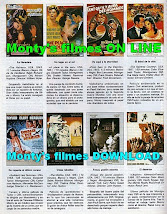














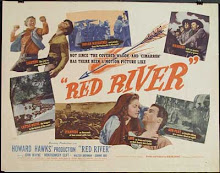
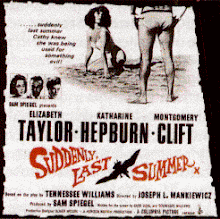




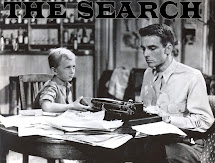

2.jpg)
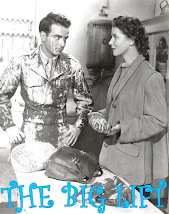.jpg)
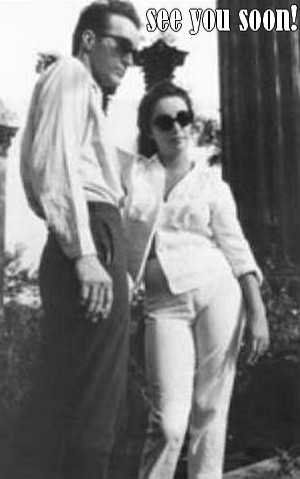

.jpg)

